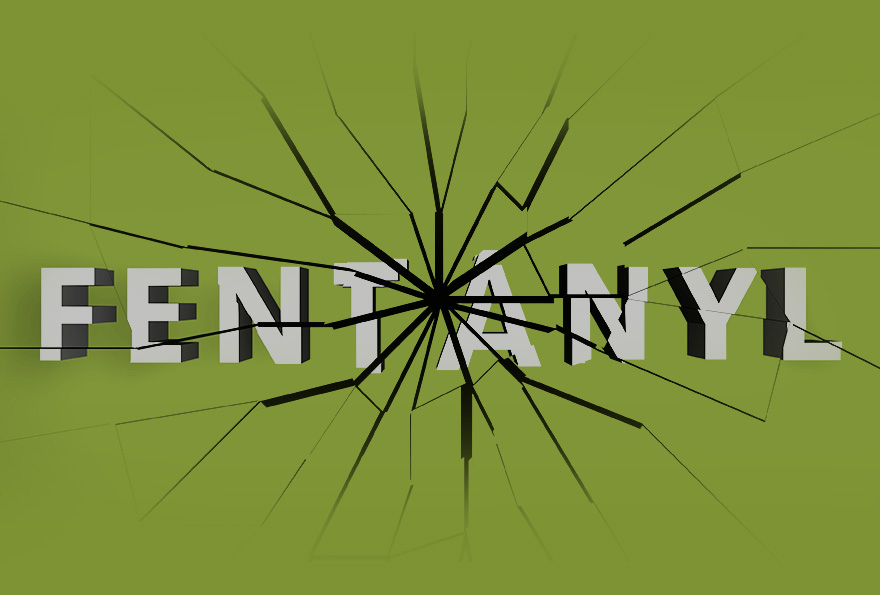Even though pharmaceutical fentanyl was made to have a legitimate medical use, an epidemic of illegally-made fentanyl has caused problems in recent years. The amount of fentanyl needed for overdose is very small compared to morphine or heroin, and this is part of what makes it so dangerous.
What Is Fentanyl?
Fentanyl is a synthetic opioid that originated as a prescription medication for severe pain. It’s up to 100 times more potent than morphine, which is why it’s often used to treat patients who have a physical tolerance to opioids as well as chronic and severe pain. However, fentanyl is also made illegally, and it’s now one of the most common drugs at fault for overdose deaths in the United States. The drug’s involvement in overdose deaths has increased considerably since 2010. At that point, it was only involved in 14.3 percent of overdose deaths related to opioids. In 2017, the number of overdose deaths increased to 59 percent.
How Is Fentanyl Used?
When legally prescribed by a doctor, fentanyl might be used as a skin patch, oral lozenge or as a shot. Illegal fentanyl is usually made in labs and sold in powder form. However, it can also be used in liquid form in eye droppers or nasal spray. Some illegal fentanyl is shaped into pills just like prescription opioids. It’s common for illegal fentanyl dealers to mix the drug with heroin, cocaine and meth among others. The reason for this is that it only takes a small amount of fentanyl to cause a high. The problem comes when someone is looking to take something like heroin or cocaine but instead takes a lethal dose of fentanyl.
Effects
Fentanyl works similar to other opioids like heroin and morphine. It binds to your opioid receptors, which are in the brain and control your emotions and feelings of pain. After you take the drug for a while, the brain builds up a tolerance, which makes it less sensitive to the effects of opioids. This makes it very difficult for you to feel pleasure from anything that isn’t opioids. Once an addiction starts, you lose interest in most things aside from drug-seeking and drug use.
Fentanyl has effects that may include the following:
• Sleepiness
• Nausea
• Confusion
• Delirium
• Sedation
• Breathing problems
• Overdose
Signs of Drug Addiction
Signs of drug addiction tend to be similar no matter what drug is being abused. The main reason for this is that an addicted person begins to prioritize seeking and using drugs over everything else in their life. If you’re wondering about drug addiction or fentanyl addiction in a loved one, consider some of the following behavioral symptoms:
• Losing interest in previous hobbies
• Neglecting responsibilities such as work, school or family
• Having financial or legal difficulties
• Becoming more secretive
• Stark mood swings
• Displaying unusual signs of restlessness, irritability or aggression
• Changing social circles
You may also find drug paraphernalia in their house or car, which might include pills, powders, eye droppers and needles.
Symptoms
As previously mentioned, overdose on fentanyl has become more and more common as the illegal use of the drug continues to rise. You need far less fentanyl to overdose versus heroin or morphine, and it’s often mixed in with other drugs due to its cheapness. Many people who overdose on fentanyl do so completely by accident as they think they’re taking the usual dose of a different drug.
The main symptom of a fentanyl overdose is extremely slowed breathing. The slowed breathing then reduces the amount of oxygen reaching the brain, which in turn causes a condition known as hypoxia. Hypoxia can quickly lead to a coma and permanent brain damage or death.
Treating a Fentanyl Overdose
Because of how fentanyl gets mixed in with other drugs, it can sometimes be difficult to figure out which drug is causing the overdose. One of the most common overdose treatments is naloxone, which is a drug that quickly binds to opioid receptors in order to block opioid drugs from doing the same. This, in effect, reverses the overdose. However, fentanyl is a lot stronger than most other opioids, which means multiple doses of naloxone might be needed to treat the overdose.
If you suspect an overdose in someone you’re with, the most important thing to do is to call 911 to get quick medical attention. If medical staff believe an opioid is responsible for the overdose, they will give naloxone when they arrive. Even after a naloxone dose, the person should be monitored for a few more hours to make sure they don’t suffer respiratory distress.
In some places, pharmacists are allowed to give out naloxone without a prescription. This allows you to obtain naloxone if you have a loved one who might be at risk for an opioid overdose. The medication usually comes in a nasal spray, needle or auto-injector.
Is a Fentanyl Addiction Possible?
Fentanyl addiction is very possible due to how potent it is. It’s most likely to happen to someone taking prescription fentanyl. These people can end up with a dependence due to tolerance, which then causes withdrawal symptoms when drug use is stopped or reduced. Dependence doesn’t always mean addiction.
Addiction is the next step after dependence where the person develops a compulsive need to seek the drug and take more of it. They continue to do this despite experiencing negative effects in their life.
Withdrawal symptoms from fentanyl can include the following:
• Problems sleeping
• Diarrhea and vomiting
• Muscle and bone pain
• Restless legs
• Cravings
• Flashes of severe cold with prickly skin
Fentanyl Addiction Treatment Methods
Addiction treatment for fentanyl is similar to the treatment of other opioid addictions. A period of detox is generally the first step. Withdrawal from fentanyl can be very uncomfortable, and a supervised detox period helps prepare you for the next steps of treatment. Medications such as buprenorphine and methadone may also be used in detox to reduce cravings and withdrawal symptoms.
Behavioral therapies are also common treatment methods for addiction to fentanyl. These types of therapy help people recognize their triggers, develop healthy coping methods and modify their behaviors and attitudes.
Other treatments include the following:
• Family group therapy
• Holistic treatments
• Dialectical behavioral therapy
• Meditation therapy
New Method Wellness is one of the nation’s best dual diagnosis treatment centers and offers a variety of evidence-based and experiential therapies to suit individual needs and situations. If you or a loved one is struggling with a fentanyl addiction, get in touch today via our website or by calling 866.951.1824







